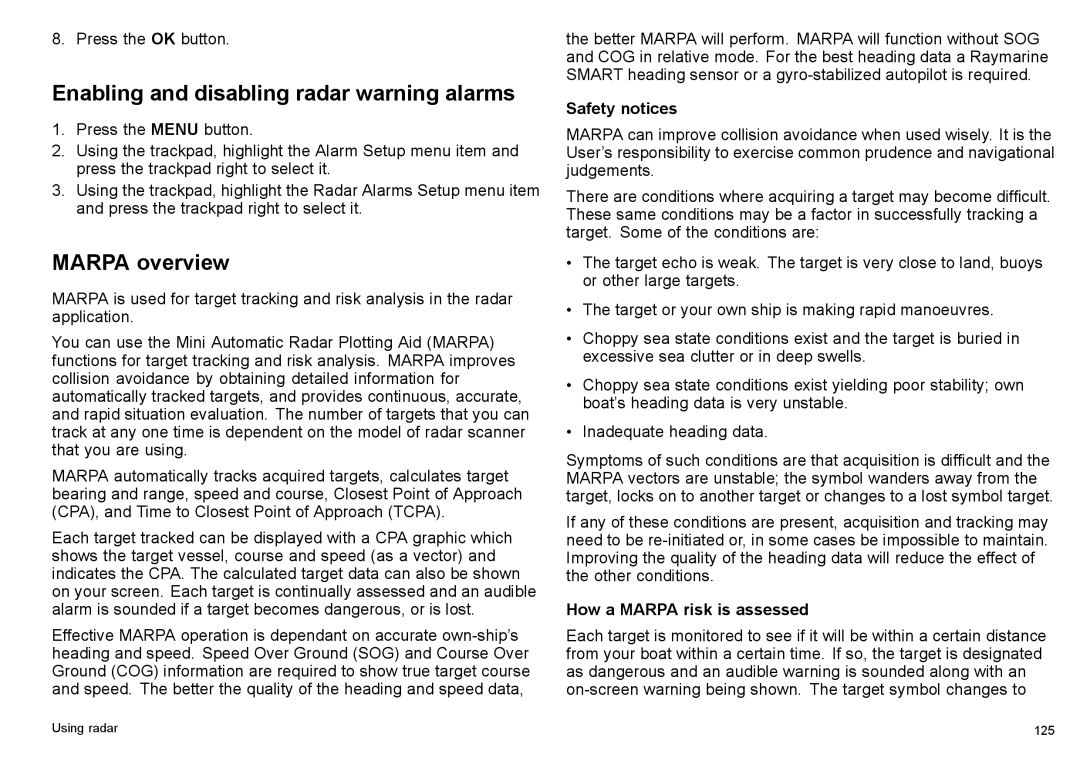8. Press the OK button.
Enabling and disabling radar warning alarms
1.Press the MENU button.
2.Using the trackpad, highlight the Alarm Setup menu item and press the trackpad right to select it.
3.Using the trackpad, highlight the Radar Alarms Setup menu item and press the trackpad right to select it.
MARPA overview
MARPA is used for target tracking and risk analysis in the radar application.
You can use the Mini Automatic Radar Plotting Aid (MARPA) functions for target tracking and risk analysis. MARPA improves collision avoidance by obtaining detailed information for automatically tracked targets, and provides continuous, accurate, and rapid situation evaluation. The number of targets that you can track at any one time is dependent on the model of radar scanner that you are using.
MARPA automatically tracks acquired targets, calculates target bearing and range, speed and course, Closest Point of Approach (CPA), and Time to Closest Point of Approach (TCPA).
Each target tracked can be displayed with a CPA graphic which shows the target vessel, course and speed (as a vector) and indicates the CPA. The calculated target data can also be shown on your screen. Each target is continually assessed and an audible alarm is sounded if a target becomes dangerous, or is lost.
Effective MARPA operation is dependant on accurate
the better MARPA will perform. MARPA will function without SOG and COG in relative mode. For the best heading data a Raymarine SMART heading sensor or a
Safety notices
MARPA can improve collision avoidance when used wisely. It is the User’s responsibility to exercise common prudence and navigational judgements.
There are conditions where acquiring a target may become difficult. These same conditions may be a factor in successfully tracking a target. Some of the conditions are:
•The target echo is weak. The target is very close to land, buoys or other large targets.
•The target or your own ship is making rapid manoeuvres.
•Choppy sea state conditions exist and the target is buried in excessive sea clutter or in deep swells.
•Choppy sea state conditions exist yielding poor stability; own boat’s heading data is very unstable.
•Inadequate heading data.
Symptoms of such conditions are that acquisition is difficult and the MARPA vectors are unstable; the symbol wanders away from the target, locks on to another target or changes to a lost symbol target.
If any of these conditions are present, acquisition and tracking may need to be
How a MARPA risk is assessed
Each target is monitored to see if it will be within a certain distance from your boat within a certain time. If so, the target is designated as dangerous and an audible warning is sounded along with an
Using radar | 125 |
